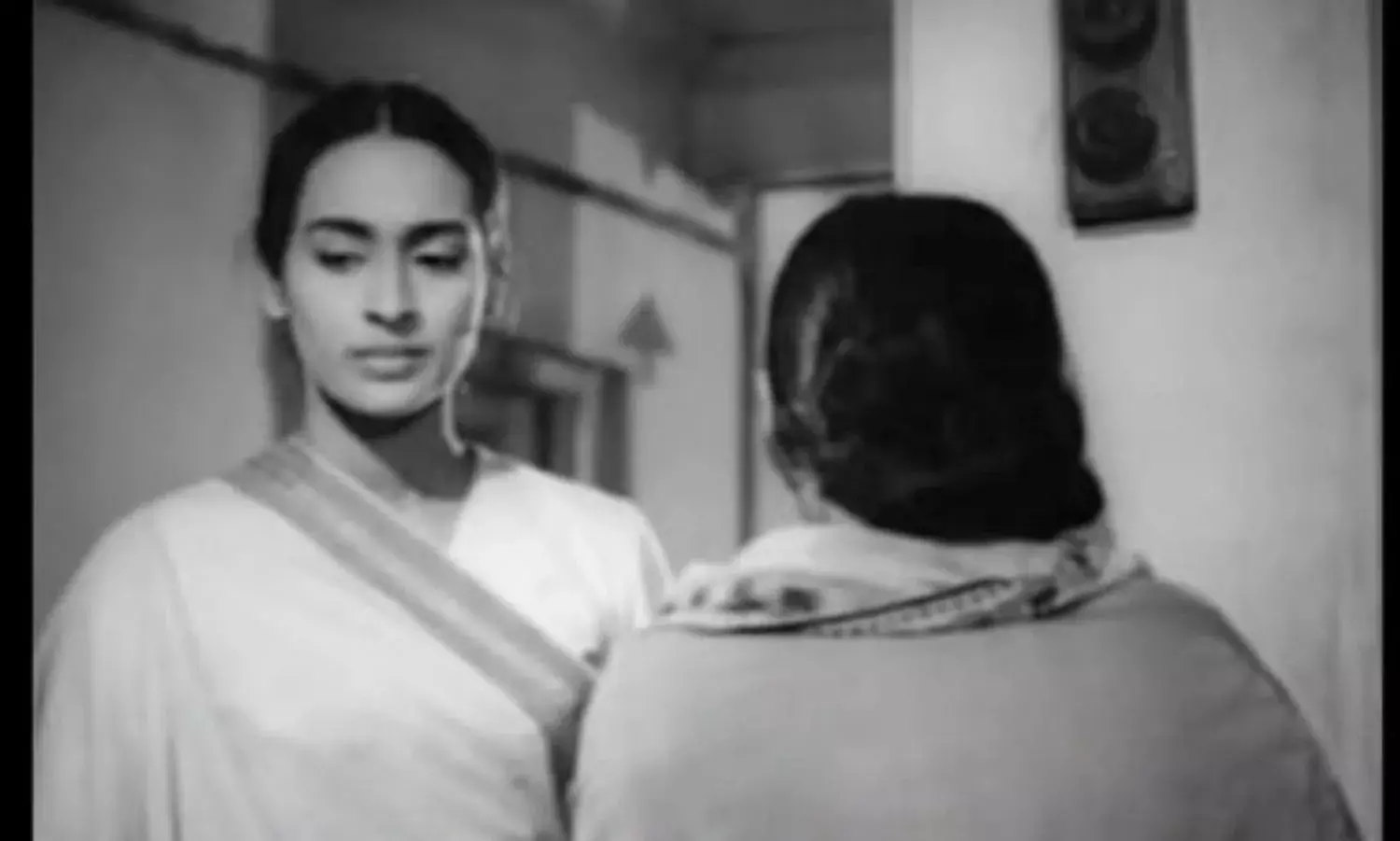Story of Immortal Love – and a Classic Film on Women in Prison
Remembering Bandini (1963) starring Nutan director Bimal Roy

It is rare to see a film that performs social realism well, and also stages the depth of human relationships. Bandini (1963) is one such film that effortlessly achieves this integration, or so it seems, an important reason why Bandini and its songs retain a great hold over our minds.
Bimal Roy’s last and some would say most memorable, feature film, tells the story of several prisoners, women in particular, and at another level the story of immortal first love.
There are many prisoners in Bandini (she who binds or she who is bound), including political prisoners. But above all the prisoner named Kalyani, a role with extreme ups and downs, played with depth and restraint by the talented and versatile Nutan.
In what was one of the best performances in a distinguished career, Nutan plays the role of a gentle, innocent village girl, caught in a turmoil she does not control, and which leads her to a crime in a moment of passion, entirely out of sync with her life and personality.
Kalyani’s imprisonment gives us a most poignant portrayal of the lives of women prisoners in Indian jails. The loneliness, dejection and vacuum are captured brilliantly by photographer Kamal Bose. The decision to film in black and white appears so highly justified.
Two songs help greatly in capturing the painful longings of these prisoners. Both are counted among the best songs written by Shailendra, and sung by Asha Bhonsle.
And they are brilliantly photographed: the camera makes use of vacant spaces to capture the vacuum in these lives and the resulting images just cannot be forgotten. The lonely quiet figures vacantly listening to the songs speak no less than the song does.
Both songs picture not Kalyani but other ordinary prisoners. The singer is working all the time in the prison while singing, and the sounds made by grain being sieved or pounded become part of the music.
The first song is Ab ke baras bhej bhaiya ko babul, in which a woman prisoner remembers all the sweet things of her maternal home and laments her separation from it by prison walls. The other is O panchi pyare saanjh sakare, sung by a prisoner to a free bird outside her cell.
The other story of a prisoner is that of Bikash (played brilliantly by Ashok Kumar), a leading revolutionary who is kept in isolation under police control. This film is set in Bengal of the 1930s, when revolutionary groups were active here against the colonial government, but in decline and suffering losses.
A police official who has respect for Bikash allows him to roam around a bit and he meets and befriends the innocent and dutiful Kalyani. Bikash is not just under police control but he also has to abide strictly by what his party tells him, even if this is shattering for his personal life.
There are two other, shorter prison stories in this film. One is a very short sequence of a revolutionary prisoner being taken to the gallows, and the distress this creates among the other prisoners, and in his mother outside.
The inspiring, also deeply saddening last call of a revolutionary to his mother is captured in a song filmed on this unnamed youth. The song, Mat ro mata lal tere, reminds viewers of the relationship of revolutionaries like Bhagat Singh and Ramprasad Bismil with their mothers. This song by Manna Dey is a jewel.
The last prison story in the film is not of a prisoner but an idealist doctor (played well by Dharmendra) who works in a jail.
At another level, however, this film is also the story of first love as immortal love which can rise above all the adversities of the world. This story is in turn immortalised by one of the greatest songs sung by S.D. Burman to his own music—O Re Majhi, Mere Sajan Hai Us Paar.
All the songs of this film are really great songs and have enriched the sociocultural scene of India for well over five decades now, giving melodious voice to the sweet, sad and deep emotions of people.
Unlike in several other films, including otherwise good films, the great songs in Bandini never distract from the main theme, but contribute greatly to increasing the impact and convey a higher meaning than mere dialogue could achieve.
The film swept the Filmfare awards, winning best film, best director, best actress, best camera work and best sound recording (to Kamal Bose and D. Billimoria respectively) and best story, which went to Jarasandh, who was a former senior jail official himself, his story Tamsi being used as a base for the screenplay by Nabendu Ghosh.
Bandini deserves a much wider audience beyond India. Yet somehow it is a very Indian film, and the deeper emotions conveyed by the songs are not easily disseminated by subtitles.
Bharat Dogra is a freelance journalist who has been involved with several social movements



